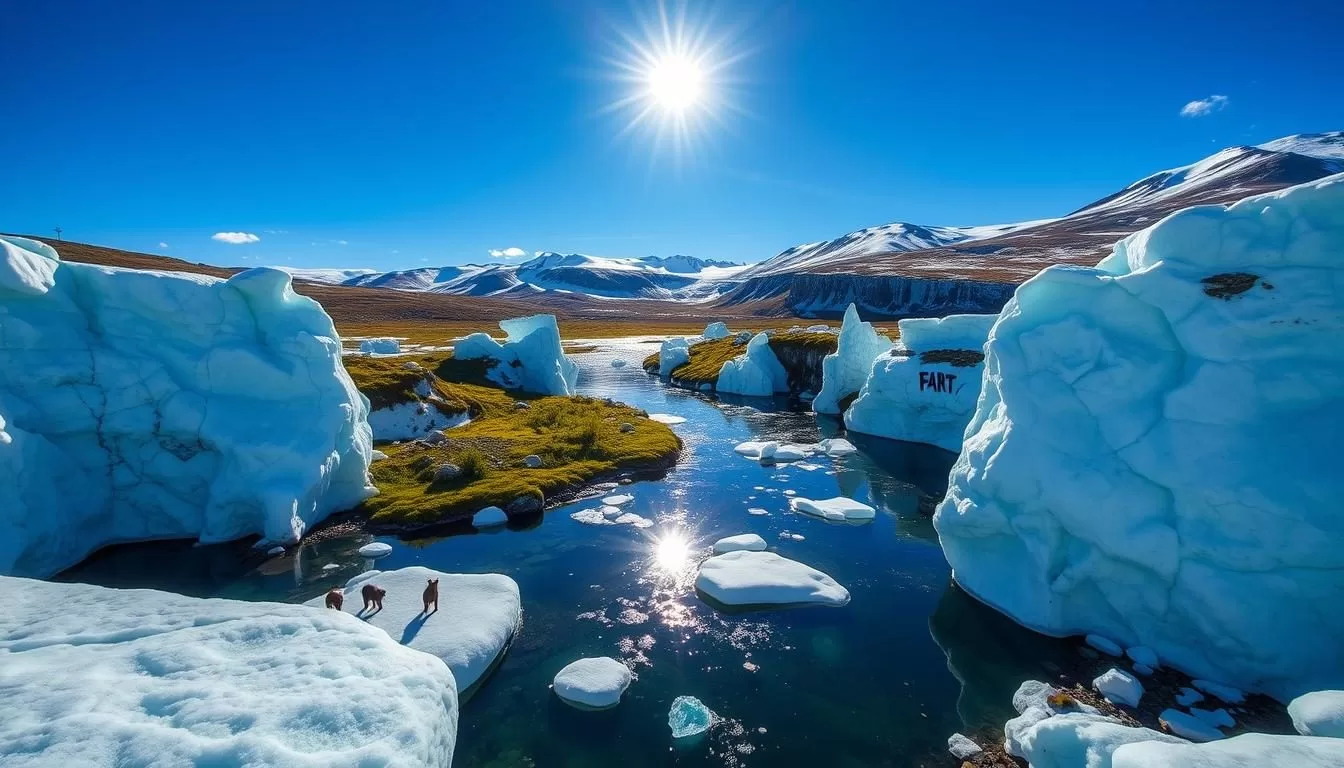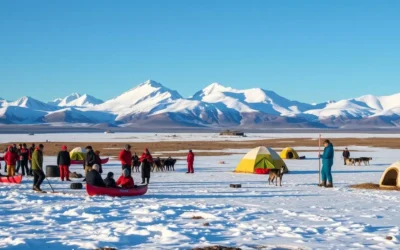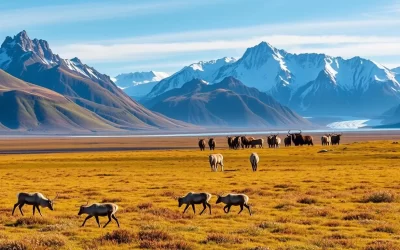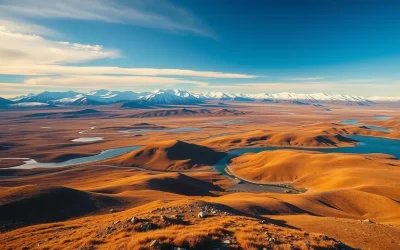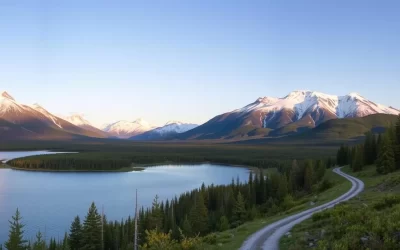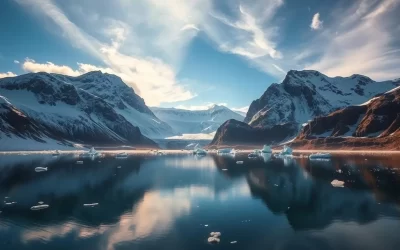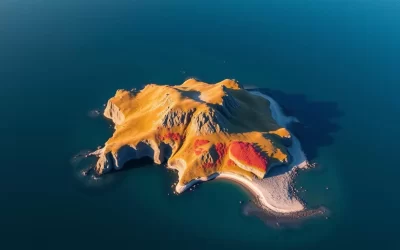✓ Accommodations✓ Flights✓ Rental Cars
Discover the Unparalleled Beauty of Clyde River
For travelers seeking authentic northern experiences, Clyde River in Nunavut is a must-visit destination. Located on the eastern coast of Baffin Island, this remote Inuit settlement provides access to some of Canada’s most dramatic landscapes and wildlife viewing opportunities.
Clyde River is one of Nunavut’s most spectacular Arctic communities, offering unique adventures for travelers. The community serves as a gateway to world-class outdoor adventures, including ice climbing, wildlife viewing, and cultural experiences.
Despite its remote location, Clyde River welcomes visitors with warm hospitality and offers a genuine glimpse into life in Canada’s Arctic. This guide will highlight the top activities and experiences in and around Clyde River, from outdoor adventures to cultural immersion opportunities.
You’ll discover why this small Arctic community has become a must-visit destination for adventurous travelers seeking off-the-grid experiences in Nunavut. Whether you’re interested in travel to unique places or exploring the local community, Clyde River has something to offer.
Discovering Clyde River: Gateway to Arctic Adventure
Clyde River, a hamlet on Baffin Island, is your gateway to the Arctic’s vast wilderness and adventure. Nestled in the Qikiqtaaluk Region of Nunavut, this destination offers a unique blend of natural beauty and cultural richness.
Where is Clyde River and Why Visit?
Clyde River is located on the eastern coast of Baffin Island, in the Canadian territory of Nunavut. You should visit Clyde River to experience the untouched Arctic landscape, rich Inuit culture, and unparalleled wildlife viewing opportunities. The area is characterized by its stunning fjords, glaciers, and vast tundras, making it an ideal location for Arctic exploration.
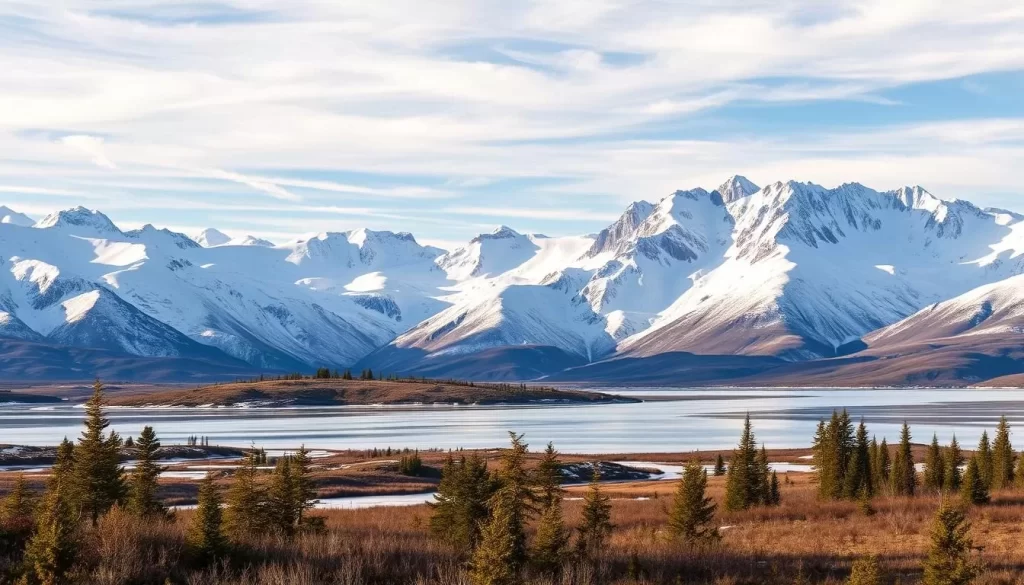
Best Time to Visit Clyde River
The best time to visit Clyde River depends on the experiences you’re seeking during your trip. Here are some key considerations:
- Summer (June to August) brings nearly 24 hours of daylight and milder temperatures, ideal for hiking and wildlife viewing.
- Winter (November to April) offers spectacular northern lights and ice climbing opportunities.
- Spring (May) features the “floe edge” season, perfect for wildlife viewing.
- Fall (September) brings beautiful autumn colors and fewer visitors.
Understanding these seasonal variations will help you plan your visit to Clyde River effectively.
Outdoor Adventures in Clyde River’s Wilderness
The vast, untouched landscapes of Clyde River beckon adventurers to explore its rugged beauty through various outdoor activities. The area is a haven for those seeking to immerse themselves in the Arctic environment.
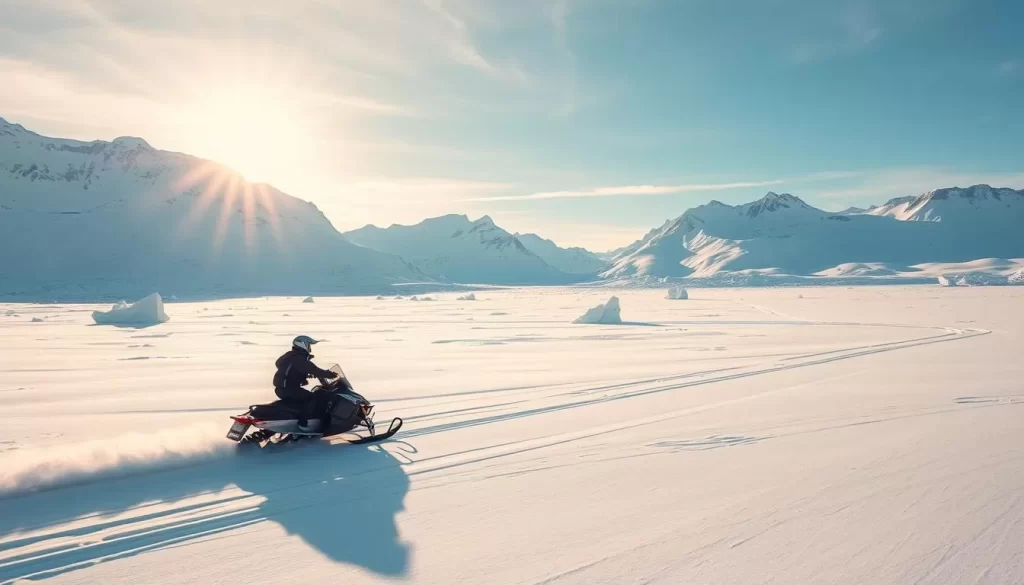
Hiking the Fjord Walls and Coastal Trails
Clyde River offers numerous hiking trails that wind through fjord walls and along coastal routes, providing breathtaking views of the Arctic landscape. Hikers can explore the region’s unique geology and witness its diverse wildlife, including species that are adapted to the harsh, Arctic conditions.
Ice Climbing and Mountain Expeditions
For the more adventurous, Clyde River is a destination for ice climbing and mountain expeditions. The region’s glaciers and frozen peaks present a challenging yet rewarding experience for climbers. With guided tours, you can tackle the icy ascents and enjoy the unparalleled beauty of the Arctic mountains.
Snowmobiling Across the Arctic Landscape
Snowmobiling is a key way to experience Clyde River’s winter landscape. You can embark on guided snowmobile expeditions that traverse the tundra and frozen fjords, reaching areas inaccessible by other means. Katannilik Territorial Park is a notable destination, offering a thrilling ride across the Arctic terrain. During winter, the Itijjagiaq Trail becomes a snowmobile highway, linking Kimmirut to Iqaluit and providing an adrenaline-fueled adventure through the Arctic.
With local operators providing fully equipped snowmobiles and experienced guides, you can enjoy a safe and authentic Arctic experience. Multi-day snowmobile trips allow you to explore nearby park areas and traditional hunting grounds, with overnight stays in heated tents or cabins.
Wildlife Viewing Opportunities Around Clyde River
Visitors to Clyde River can experience some of the most unique wildlife viewing opportunities in the Arctic. The region’s diverse landscape and harsh climate support a wide range of wildlife, from majestic polar bears to various species of whales and a vast array of birdlife.
The Arctic environment around Clyde River is home to an incredible variety of wildlife. With the right guidance, you can observe these animals in their natural habitat, creating unforgettable experiences.
Polar Bear Watching Tours
Embark on a Polar Bear Watching Tour in Clyde River, Nunavut, and witness these majestic creatures up close. Polar bears roam the sea ice and surrounding areas, and guided tours provide a safe and informative experience.
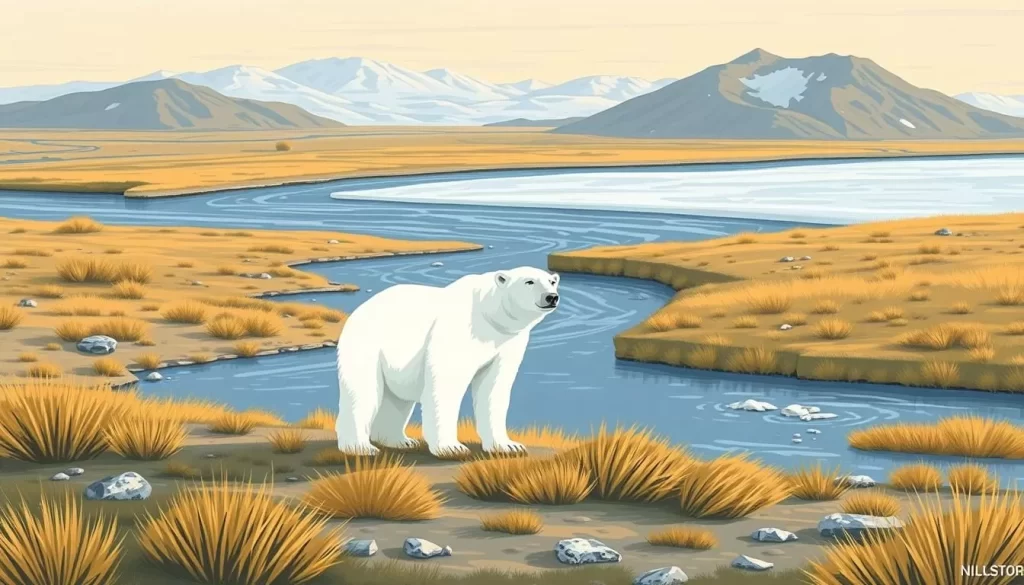
Whale Watching in Baffin Bay
The waters of Baffin Bay, near Clyde River, are a hotspot for Whale Watching. You can spot various species, including narwhals, belugas, and bowhead whales, in their natural environment.
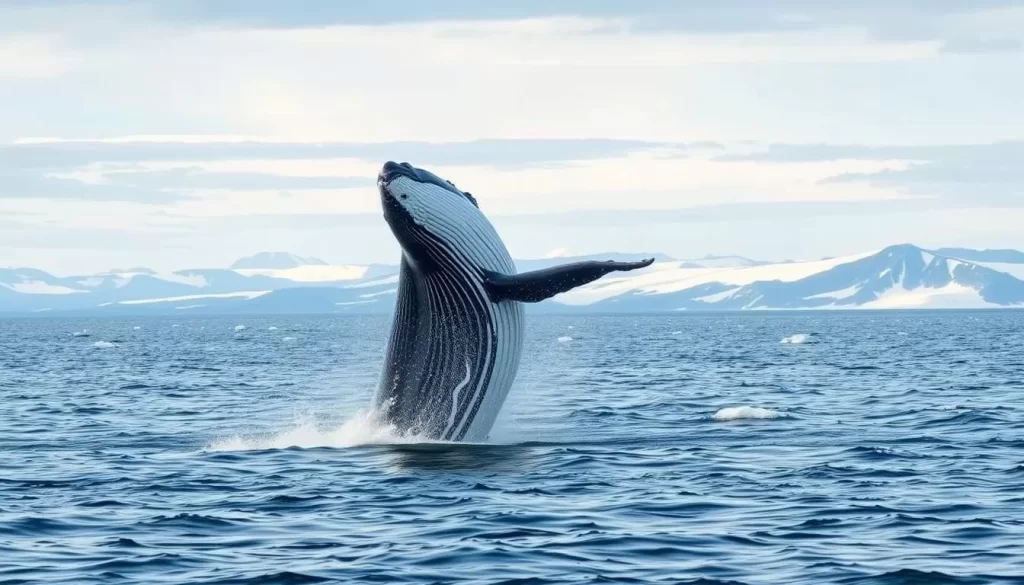
Bird Watching in the Arctic
The Clyde River area is a remarkable place for bird watching, with over 40 species migrating to or through the region during the brief summer. Dramatic sea cliffs serve as important nesting sites for thousands of seabirds.
The abundance of bird life during the breeding season offers a stark contrast to the seemingly harsh Arctic environment, demonstrating the remarkable adaptability of these species. Local guides can help you spot elusive species like the rock ptarmigan.
Cultural Experiences and Inuit Traditions
The cultural fabric of Clyde River is woven with Inuit traditions, awaiting your discovery. As you visit this Arctic community, you’ll have the opportunity to engage with the local culture in meaningful ways.
Visiting the Ittaq Heritage and Research Centre
The Ittaq Heritage and Research Centre is a treasure trove of Inuit history and culture. Here, you can explore artifacts, learn about the local heritage, and gain insights into the lives of the Inuit people. The centre offers a unique perspective on the community’s traditions and customs.
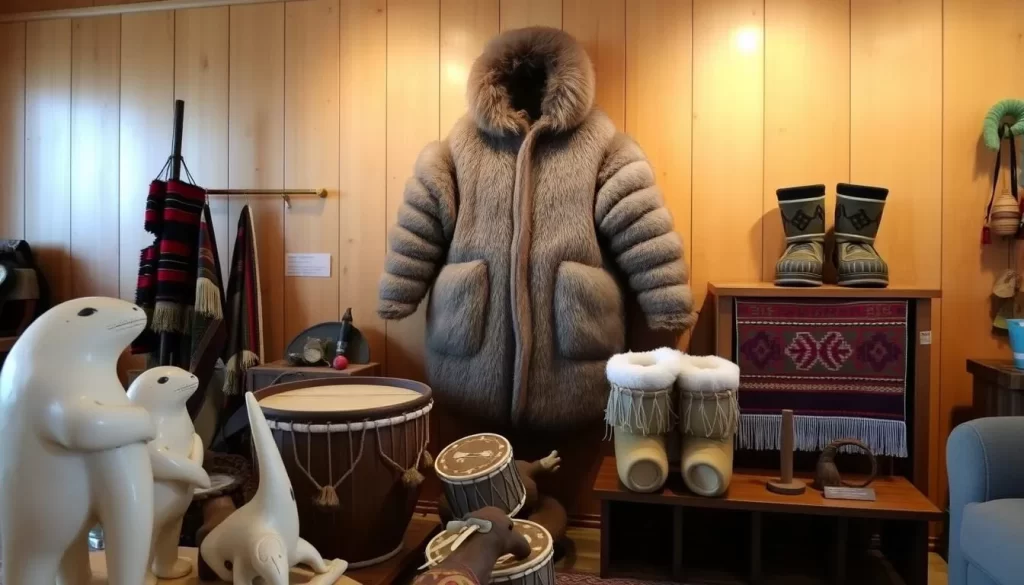
Learning Traditional Inuit Skills and Crafts
Engage with the local community by learning traditional Inuit skills and crafts. From carving to printmaking, you can participate in workshops that showcase the remarkable talent of Clyde River’s artisans. These experiences not only provide a deeper understanding of Inuit culture but also offer a chance to take home unique, handmade souvenirs.
Experiencing Local Festivals and Community Events
Clyde River hosts various festivals and community events throughout the year, offering visitors a chance to experience Inuit culture firsthand. The annual Spring Festival, for instance, features traditional games, cultural performances, and community feasts. You can witness throat singing, drum dancing, and storytelling, which are living artifacts of Inuit oral tradition.
| Event | Description | Highlights |
|---|---|---|
| Spring Festival | A celebration of Inuit culture and traditions | Traditional games, cultural performances, community feasts |
| Community Feasts | Sharing traditional foods harvested from the land and sea | Local cuisine, community bonding |
| Art Demonstrations | Showcasing local artisans’ skills in carving, printmaking, and crafts | Unique art pieces, cultural insights |
These cultural experiences in Clyde River provide a unique opportunity for visitors to engage with the community, learn about Inuit traditions, and appreciate the local art and artifacts. By participating in these events, you’ll foster a deeper understanding and appreciation of the Inuit culture.
Exploring National Parks Near Clyde River, Nunavut: Best Things to Do – Top Picks
Nunavut’s national parks, accessible from Clyde River, provide a unique blend of Arctic adventure and natural beauty.
Day Trips to Auyuittuq National Park
Auyuittuq National Park is a haven for outdoor enthusiasts, offering hiking trails with breathtaking views of glaciers and mountains. You can explore the park’s vast wilderness, taking in the unique Arctic landscapes.

Sirmilik National Park Adventures
Sirmilik National Park, meaning “place of glaciers” in Inuktitut, is another spectacular protected area accessible from Clyde River. The park encompasses three distinct geographic areas: Bylot Island, Oliver Sound, and the Borden Peninsula, each with unique landscapes ranging from ice caps and glaciers to wetlands and coastal plains.
The park is home to a diverse range of wildlife, including polar bears, narwhal, and beluga whales. You can experience the park’s natural beauty through various activities such as hiking, sea kayaking, and wildlife viewing at the floe edge.
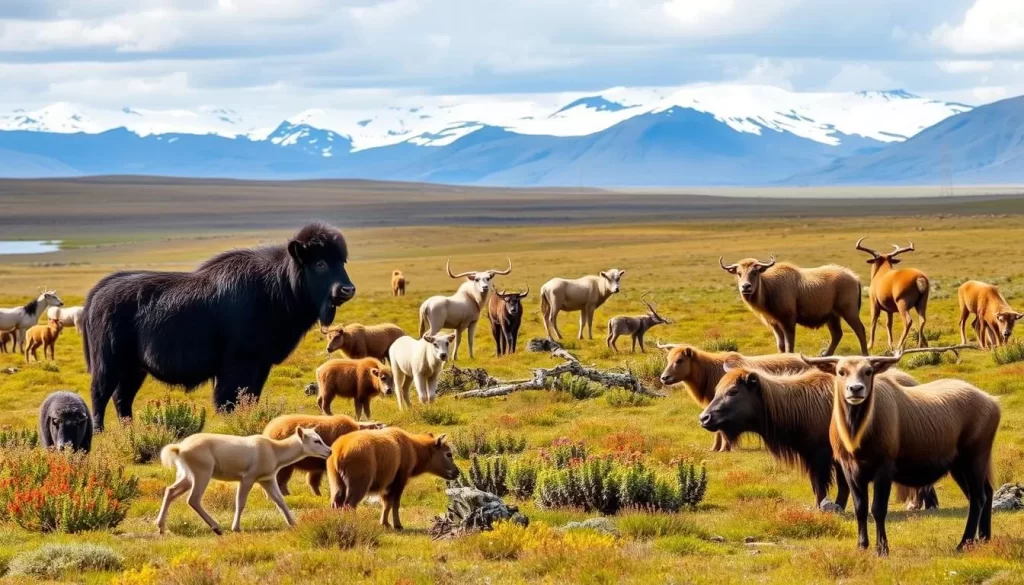
Sirmilik National Park is managed by Parks Canada in partnership with local Inuit communities, incorporating traditional knowledge into park management and visitor experiences. The park connects to several territorial park areas, creating a vast protected region that safeguards critical habitat for Arctic species and preserves the cultural landscape of the Inuit.
Practical Tips for Visiting Clyde River
Clyde River, a gem in Nunavut’s vast wilderness, necessitates thorough planning for a successful visit. Traveling to this remote community is primarily done by air, with regular flights from Iqaluit connecting Clyde River to the rest of Canada.
Accommodation options are limited, so it’s essential to make advance reservations, especially during the peak summer travel season. You can choose from a single hotel and a few homestay opportunities, making it crucial to plan ahead to ensure availability.
When packing for your trip, be prepared for extreme weather conditions. Even in summer, the Arctic environment can turn cold quickly, where mountains and tundra meet the sea. The community has a general store for basic supplies, but the selection is limited, and prices are high, so it’s advisable to bring specialty items and specific gear needed for your activities.
Safety precautions are crucial in this remote territory. Be aware of bears and other wildlife, carry appropriate communication devices, and respect local guidelines about travel on the land. Additionally, respect for Inuit culture and traditions is essential; take time to learn about local customs and ask permission before photographing people.
Consider the unique daylight patterns of the Arctic when planning your visit. Summer brings nearly 24-hour daylight, ideal for extended adventures, while winter’s darkness creates perfect conditions for viewing the northern lights. Guided tours are highly recommended as they provide invaluable local knowledge and support the community’s economy.
Lastly, be aware that territorial parks and protected areas have specific regulations and permit requirements. Check with local authorities or tour operators about access to these special places that showcase Nunavut’s natural world.
The above is subject to change.
Check back often to TRAVEL.COM for the latest travel tips and deals.
